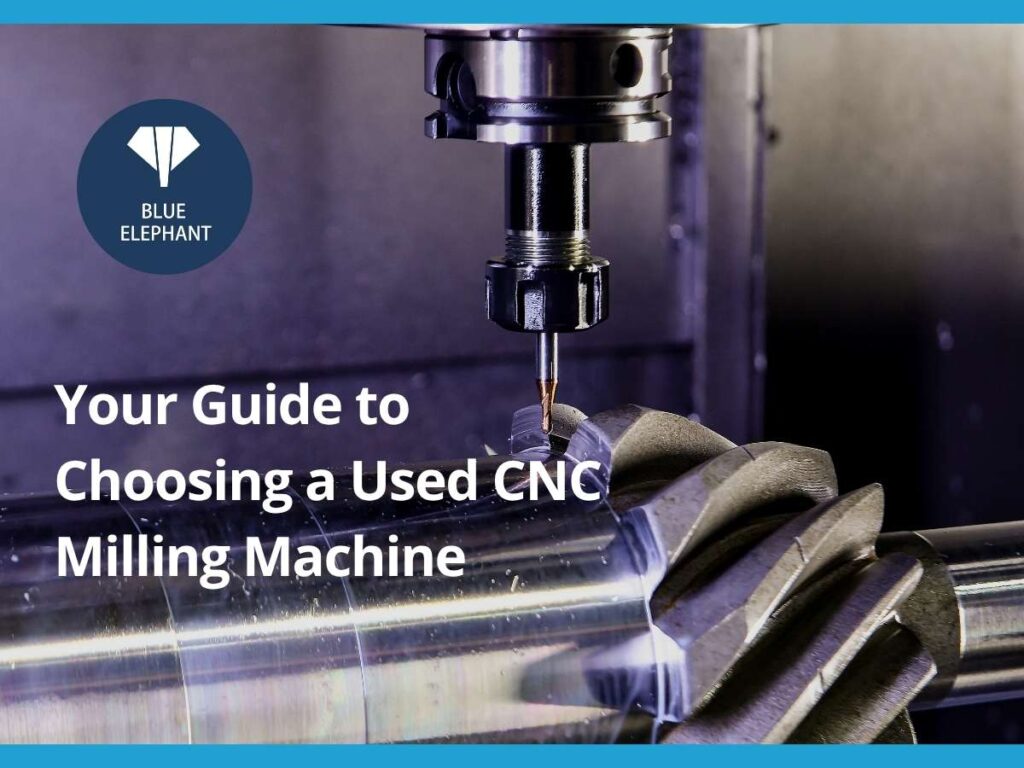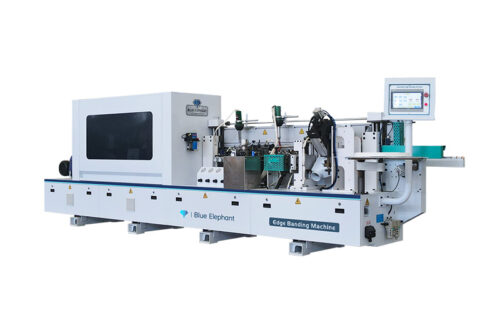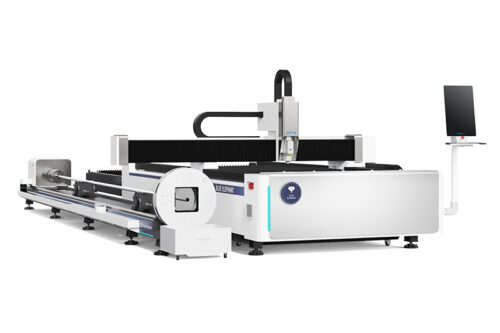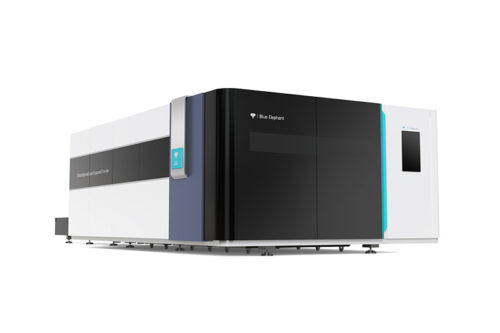The first used CNC machine I bought should have been a great deal. It was a well-known brand, the seller claimed it was in “perfect condition,” and I was eager to start my business.
But when I finally got it in my shop, I realized the reality was different. The spindle was loud, the machine bed wasn’t level, and the software was outdated.
That mistake cost me time, money, and trust in the used CNC market. But it also taught me how to spot a good machine from a bad one.
After years of working with CNC milling machines—inspecting, repairing, and sourcing them for professionals like you—I know exactly what to look for and what to avoid.
In this guide, I’ll show you how to find a used CNC milling machine that fits your needs without the risk. You’ll learn the key features to check, common pitfalls to avoid, and expert tips to make the right choice.
By the end, you’ll have everything you need to buy a machine that delivers quality, performance, and value—without the headaches.
Let’s dive in!
1. Key Factors to Consider When Buying a Used CNC Milling Machine
Buying a used CNC milling machine can save you a lot of money—or cost you more than it’s worth. I’ve seen both happen. Some people get a solid machine that runs for years. Others get stuck with constant breakdowns and expensive repairs. The difference? Knowing what to look for.
Machine Condition & History
I once bought a machine that seemed perfect. The seller said it worked fine. It even looked clean. But when I turned it on, the spindle made a grinding noise, and the table had too much play. That “great deal” turned into months of frustration and costly repairs.
Check for wear on the spindle, ball screws, and linear guides. Run the machine and listen for strange noises. If the tool changer jams even once, that’s a warning sign. Ask for maintenance records. A well-maintained machine will have proof of regular servicing. If a seller doesn’t have records, think twice.
Price & Budget Considerations
A low price doesn’t always mean a good deal. I’ve seen people jump on cheap machines, only to spend more fixing them than they would have spent on a better one.
Think about age and condition. Older machines might be cheaper, but they can have outdated software or worn-out parts. If a price seems too low, ask why.
Seller’s Reputation & Verification
A friend of mine bought a CNC online without checking the seller. Big mistake. The machine arrived with faulty electronics, and the seller disappeared.
Always verify who you’re buying from. Dealers offer more security, but some private sellers are reliable too. Check reviews. Ask for a video of the machine running. If something feels off, walk away.
Spare Parts & Upgradability
Some machines are easy to repair. Others turn into expensive paperweights when a part breaks. Before buying, check if spare parts are available. If the software or controls can be updated, that’s a bonus.
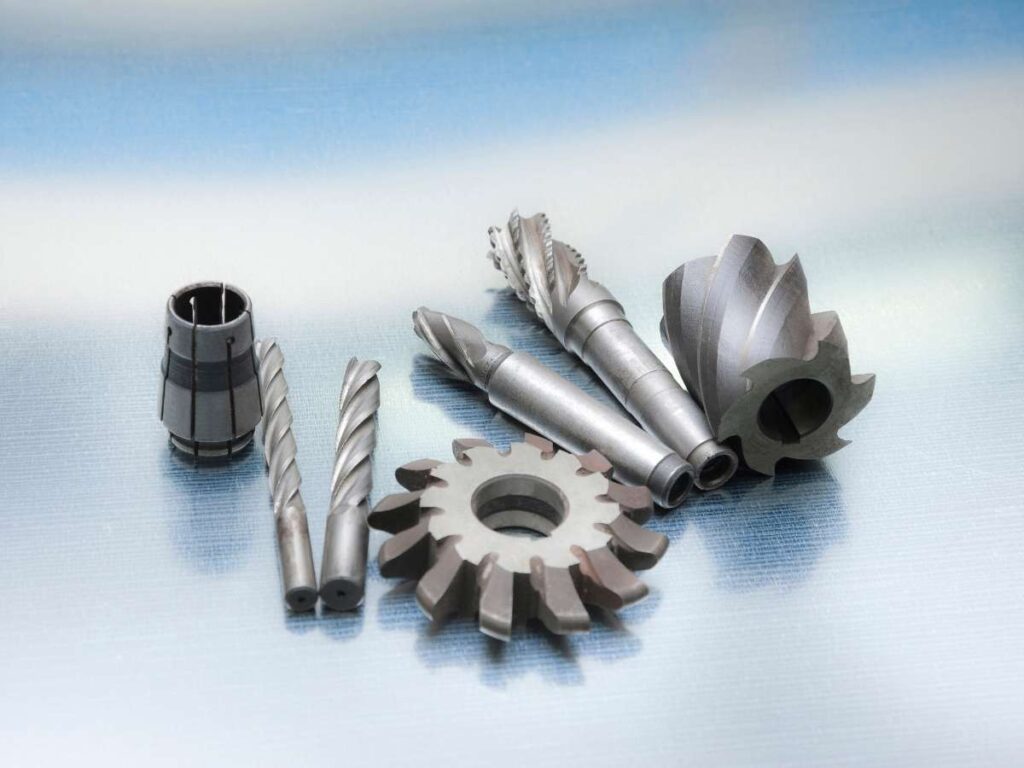
2. Advantages of Buying a Used CNC Milling Machine
Buying a used CNC milling machine can be a smart investment. It gets the job done without the high cost. For many businesses, it’s the best way to expand production without financial strain.
Cost Savings
A used machine costs significantly less than one fresh from the factory. This makes it possible to get a high-quality model at a much lower price. Instead of settling for something basic, you can afford a machine with more features and better performance.
For small businesses and startups, this means less financial risk. You can invest in production without taking on heavy debt.
Immediate Availability
No waiting. No long lead times. A used CNC milling machine can be purchased and put to work right away. Machines are available from local dealers, industrial auctions, and private sellers. If your shop needs a quick solution, buying used lets you start cutting immediately.
Lower Depreciation Rate
Used machines hold their value better. If you decide to sell later, you won’t lose as much money compared to buying something brand new. Some models even become more desirable over time, especially if they are known for durability and reliability.
Proven Durability & Performance
Many machines built years ago are still going strong. Some are even better than newer models because they were made with higher-quality materials. A well-maintained machine has already proven it can handle tough jobs.
Great for Small Businesses & Startups
Scaling up production can be expensive. Buying a used CNC machine gives you the tools you need without a huge financial burden. It’s a practical way to grow your business without unnecessary risk.
3. Disadvantages of Buying a Used CNC Milling Machine
Buying a used CNC milling machine can save money, but it’s not always easy. There are risks. Some machines work flawlessly. Others come with hidden problems that lead to frustration, downtime, and costly repairs.
Potential Wear & Tear Issues
I once inspected a machine that looked fine on the surface. The frame was solid, the spindle spun smoothly, and everything seemed in order. But after running it for a few minutes, the ball screws started making noise. A closer look revealed serious wear—something I would have missed if I hadn’t tested it.
Used machines have been through years of work. Some have hidden mechanical issues. Spindles wear down. Linear guides lose precision. Tool changers jam. A bad purchase can turn into a costly mistake.
Careful inspection is key. Run the machine before buying. Check maintenance records. If anything seems off, walk away.
No Manufacturer Warranty or Support
Most used CNC machines come as-is. No warranty. No factory support. If something breaks, you’re on your own.
For some machines, third-party repair services are available. But older models? Finding someone with the right expertise can be a challenge. If you don’t have experience troubleshooting CNC machines, consider how much support you’ll need before buying used.
Outdated Technology & Software Limitations
Technology moves fast. Some older CNC machines don’t support modern CAD/CAM software. Others lack automation features that improve efficiency.
I used a machine that required a floppy disk to load programs. Finding compatible software was a nightmare. Retrofitting can be an option, but it’s expensive. Some machines simply can’t be upgraded.
Higher Maintenance Costs
A used machine often requires more servicing. Bearings, motors, and controls don’t last forever. Some parts wear out faster than others, leading to frequent repairs.
Replacement parts can also be a problem. For well-known brands, parts are usually available. But for older or uncommon models? You might spend weeks tracking down a single component.
4. How to Inspect a Used CNC Milling Machine Before Purchase?
A used CNC milling machine can be a great deal—if it’s in good shape. But how do you know? A quick glance isn’t enough. You need to inspect it properly before committing to a purchase.
Look at the External Condition
Before anything else, step back and take a good look at the machine. Are there cracks, rust, or dents? Do the panels look loose or damaged? A machine that looks neglected on the outside might have deeper issues inside.
Check for oil leaks or excessive grease buildup. This could mean poor maintenance or worn-out seals. If the machine has been sitting unused for a long time, parts might have seized up.
Check the Spindle, Bearings, and Moving Parts
The spindle is the most expensive part to replace. If it’s in bad shape, walk away. Try to spin it by hand (if possible) and listen. Grinding noises or rough movement mean trouble. Worn-out bearings can cost a fortune to fix.
Run the machine through its full range of motion. Ball screws and linear guides should move smoothly. If there’s too much play or resistance, those parts might be worn.
Test the tool changer. It should switch tools without hesitation. If it jams, misaligns, or struggles to grip the tool, repairs could be costly.
Power It Up and Run a Test Program
If the seller allows it, turn the machine on. Watch how it responds. Does it start smoothly, or does it take too long? Run a simple cutting operation. Pay attention to speed, accuracy, and vibration.
If the machine stalls, moves inconsistently, or shows errors, something isn’t right. A good machine should operate smoothly without unexpected stops.
Check the Software and Controller
Older machines can sometimes be a nightmare to update. Check if the controller is compatible with modern CAD/CAM software. If it still uses floppy disks or outdated ports, upgrading might be expensive.
Try pressing buttons on the control panel. Every function should respond instantly. Slow or unresponsive controls could indicate failing electronics.
Ask for Maintenance Records
A well-maintained machine should have service logs. Ask them. If the seller doesn’t have any records, that’s a warning sign. Regular maintenance means fewer surprises.
Also, check if replacement parts are easy to find. Some older machines are great—until they break, and you realize parts are no longer available.
5. Used vs. Rental vs. Buying New
Choosing between buying used, renting, or investing in a new CNC machine depends on your budget, timeline, and long-term goals. Each option has its advantages and trade-offs.
Some shops save thousands by buying used. Others rent to avoid big upfront costs. Some invest in new machines for reliability and support. Which one is right for you?
Here’s a breakdown of each option—told through real-world scenarios—to help you decide.
| Option | Setup | Conflict | Resolution | Pros | Cons |
| Buying Used | A small shop wants to expand but has limited funds. They find a well-maintained used CNC at a lower price. | The machine runs fine at first, but after a few months, the spindle starts making noise. Repairs become necessary. | After replacing worn-out parts, the machine works well again. They saved money but had unexpected maintenance costs. | Lower upfront cost, immediate availability, slower depreciation. | No warranty, possible high maintenance, limited model options. |
| Renting | A startup wins a short-term contract that requires a CNC machine. Instead of buying, they rent. | Rental fees add up. Over time, they realize they could have bought a machine for the same cost. | They return the machine at the end of the contract. For future projects, they consider buying instead of renting. | No large upfront cost, maintenance covered by rental company. | Higher long-term cost, no ownership, limited customization. |
| Buying New | A manufacturer needs a high-precision CNC with advanced features. They invest in a new machine with full support. | The cost is high, and the wait time for delivery stretches longer than expected. | The machine arrives and performs flawlessly. With a warranty and factory support, they avoid downtime. | Latest technology, full manufacturer support, fully customizable. | High initial investment, longer lead time. |
If you need a machine fast and want to save money, buying it used is a solid option, but maintenance risks exist. Renting works for short-term projects but isn’t cost-effective long-term. For those who want cutting-edge performance, long-term reliability, and full support, a new CNC is the best investment.
At Blue Elephant, our new CNC machines offer precision, durability, and full manufacturer backing—helping you grow your business with confidence.
6. Maintenance and Support Challenges for Used CNC Milling Machines
Owning a used CNC milling machine can save money, but maintenance and support can be a challenge. Unlike new machines, which come with warranties and factory service, used machines often require more effort to keep running smoothly.
Some buyers get lucky—their machines run for years with minimal issues. Others face constant breakdowns, long repair times, and frustrating searches for replacement parts. Before buying used, you need to understand the potential challenges.
Lack of Manufacturer Support
Many older CNC models are no longer supported by manufacturers. That means no direct technical assistance, no software updates, and no access to factory-trained repair teams.
I once tried calling a manufacturer about an issue with an older machine. Their response? “We don’t support that model anymore.” I was left searching for independent technicians, which took time and cost more than expected.
Spare Parts Availability
Some CNC machines last for decades—but only if you can find the parts. As models become outdated, manufacturers stop producing replacement parts.
This can turn a simple repair into a major headache. If parts are scarce, you might end up waiting weeks for something as small as a ball screw or circuit board. In some cases, you may have to buy parts from third-party suppliers at much higher prices.
Frequent Repairs & Increased Downtime
Older machines need more maintenance. Bearings wear out. Spindles lose accuracy. Electrical components start failing.
A friend of mine bought a used CNC at a great price. But within a year, he had replaced the spindle, the control board, and several motors. What he saved upfront, he spent on repairs and lost production time.
No Standardized Service Contracts
When you buy a new CNC, service agreements are an option. They cover repairs and scheduled maintenance. With a used machine? You’re on your own.
This means you’ll need to budget for unexpected breakdowns and find reliable service providers on your own. If you don’t have in-house technicians, this can be a major challenge.
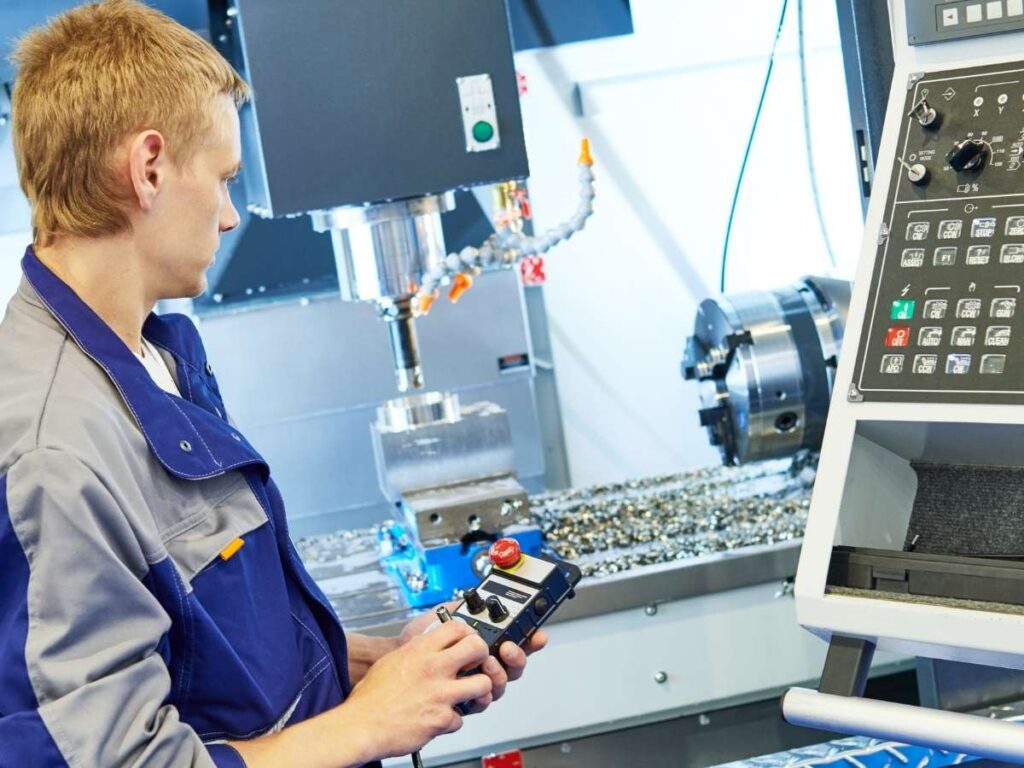
7. Why Buying a New CNC Milling Machine Might Be the Better Option
A new CNC milling machine is a big investment, but it may be the best choice for your business. If you need long-term reliability, modern features, and minimal maintenance, buying new offers clear advantages.
- Long-Term Reliability & Performance: A new CNC machine runs at peak performance from the start. There are no hidden issues, worn-out parts, or unexpected breakdowns. You get higher precision, consistency, and efficiency without the risks that come with a used machine.
- Latest Technology & Features: Modern CNC machines come with advanced automation, energy efficiency, and better software integration. If you use CAD/CAM programs or need Industry 4.0 connectivity, a new machine provides compatibility with the latest systems.
- Manufacturer Warranty & Support: A new machine includes full factory support. You get warranties on parts and labor, along with direct technical assistance when needed. At Blue Elephant, new CNC machines come with expert support, training, and troubleshooting services, helping you get the most from your investment.
- Lower Maintenance & Repair Costs: New machines need less servicing and have readily available parts. You won’t have to search for discontinued components or worry about frequent breakdowns, saving time and money on repairs.
- Customization & Scalability: With a new CNC, you choose the exact specifications and features needed for your work. At Blue Elephant, customization options make it possible to scale production without limitations, allowing the machine to fit your business now and in the future.
- Higher Resale Value: New machines hold their value longer. If you decide to upgrade, sell or trade in a newer model, it is much easier than trying to offload an outdated one.
Conclusion
Buying a CNC milling machine—used or new—is a big decision. You now know the pros and cons of each option, from cost savings to maintenance risks.
A used machine can be a great deal if you inspect it properly. A new one offers reliability, advanced features, and full support.
What matters most to you—budget or long-term performance?
Don’t wait too long to decide. The right CNC machine can transform your business.
Contact us today and let’s find the perfect CNC for you!
Learn More: Recommended Reads
If you’re looking for more insights, we’ve put together a list of helpful articles that you might enjoy:
Still haven’t found what you’re looking for? Don’t hesitate to contact us. We’re available around the clock to assist you.


